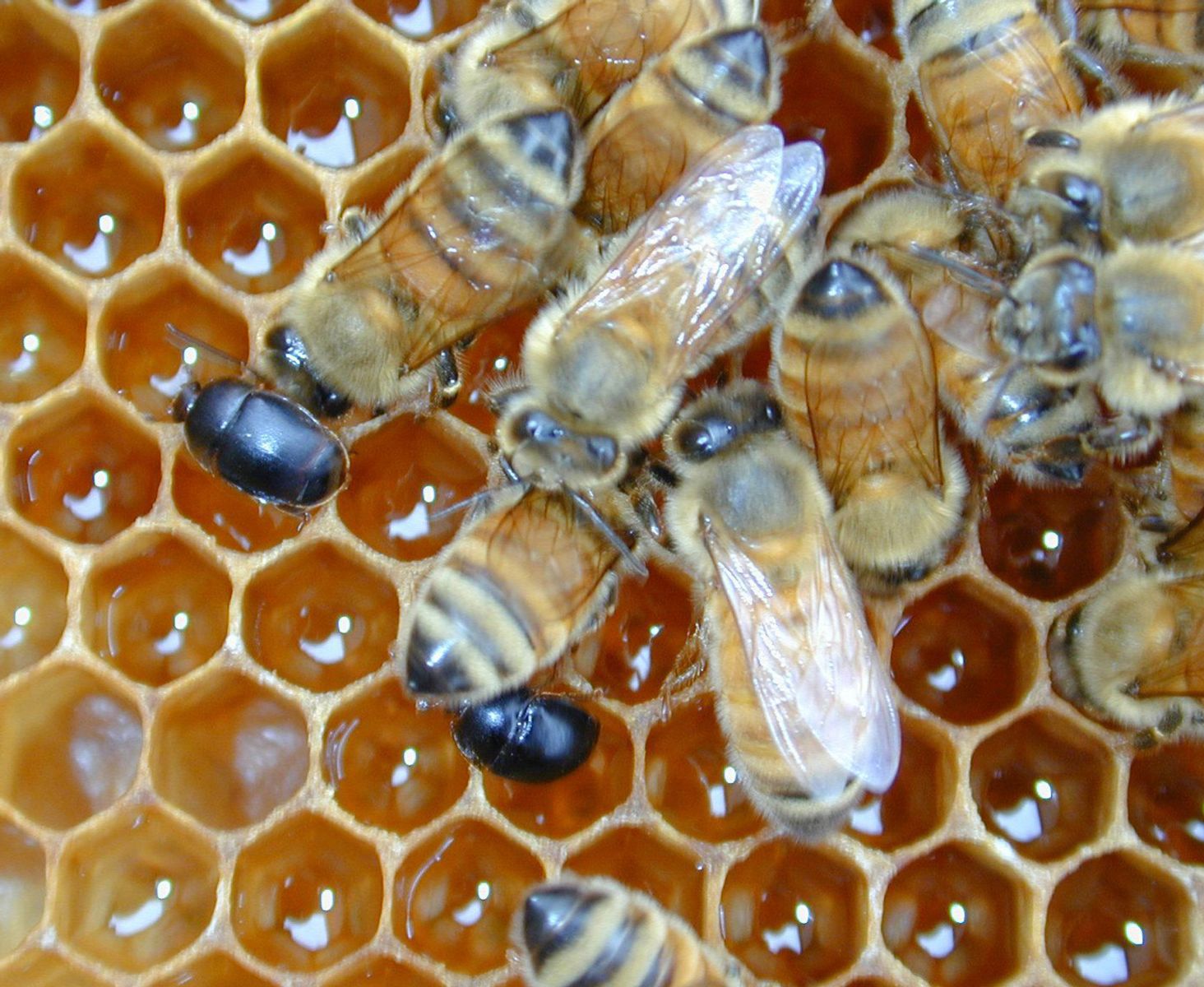Research Areas
.jpeg)
Sample projects available for Summer 2024
Dr. David Tarpy
- Elucidating the gut microbiome of honey bee queens
- Studying the pathogen webs within honey bee colonies (particularly viruses)
- Investigating the disease ecology in pollinator communities in agricultural buffer strips
Dr. Elsa Youngsteadt
- Relationship between behavior, morphology, and pathogen status of carpenter bees (with Tarpy lab)
- Effects of socioeconomic status on urban bee habitat and bee diversity
- Effects of urban warming and climate change on bee health and pollination
Dr. Carlos Goller
- Evaluating the microbial diversity found in DNA from bee hives
- High-throughput screening of samples from bee hives to identify antimicrobials and potential pathogens
- Characterizing new yeast associated with bees
Dr. Becky Irwin
- Exploring how floral traits influence bee parasite transmission
- Investigating how the biology and sociality of bees affects parasite reproduction in individuals and colonies
- Examining how the secondary chemistry of nectar and pollen influences bee disease dynamics?
Dr. Manuel Kleiner
- Study of host-microbiome systems in both animals & plants, comparing microbiome interactions across host kingdoms
Dr. Will Petry
- Modeling pathogen transmission within & among bee colonies
- Characterizing the dispersal ecology of hive pests/inquilines & modeling their spatial spread
Dr. Hannah Levenson
- Evaluating the impacts of pollinator habitat plantings on pollinator communities
- Exploring the interface of pest management and pollinator conservation in specialty crops
- Investigating the disease ecology of pollinator communities in agroecosystems
Dr. Caiti Smukowski Heil
- Population genetics of nectar dwelling yeast
- The role of insects in yeast mating and outcrossing
- Insect mediated dispersal of yeast
Dr. Kasie Raymann
- Determining how physiology and diet impact the honey bee gut microbiome
- Characterizing the reproductive microbiome of honey bees
- Using experimental evolution to study the factors that impact virulence in opportunistic pathogens

(1).JPG)
Former Student Research Projects
- 2023
- Why did the bee cross the road? (Angela Y., Youngsteadt lab)
- 30 Years of Encarsia in North Carolina: Where Are They Now? (Micah L., Kleiner lab)
- Comparing the Diversity of Microorganisms within Wildtype and Commercially Available Galleria mellonella Larvae (Makenzie H., Goller lab)
- Honey Bee Lifespan Influence on the Gut Microbiome (Sunday W., Tarpy lab)
- 2022
- Does adding pollinator conservation habitat increase mite abundance on bees? (Nia B., Levenson lab)
- Effects of nectar yeast in pollinator foraging preference (Mckaela W., Irwin lab)
- Describing the interactions between pathogens and parasites within honey bee colonies (Cameron M., Tarpy lab)
- The Changes of Microbial Abundance and Nutritional Content Through“Bee Bread” maturation of Large Carpenter bee Nests (Estefany V., Mikaelyan lab)
- 2021
- Isolation & Analysis of Paenibacillus larvae from Healthy & AFB-Diseased Honey Bee Hives (Rebecca G., Miller Lab)
- Treatments Towards Reducing Parasite Infection within Commercial Bumblebee Colonies (Levi L., Irwin Lab)
- Combined Effect of Pathogen Presence and Temperature Stress on Drone Sperm Resilience (Keana D., Tarpy Lab)
- Characterization of Wild Starmerella bombicola Isolates (Giovanni C., Goller Lab)
- The External Microbiomes of the Eastern Carpenter Bee: Characterization & Potential Applications for Insect Biocontrol (Elizabeth W., Mikaelyn Lab)
- 2019
- P. larvae and Its Prophages: Understanding Prophage Integration and Maintenance (Maggie R., Miller Lab)
- Does Flow Morphology Affect Transmission of a Bumble Bee Parasite (Melanie H., Irwin Lab)
- Carpenter Bee Nests as a Source of Microbes for Biodegradation of Pulp Mill Waste (Simran S., Grunden Lab)
- Xylocopa virginica Nesting Patterns and Microbial Diversity in the Nest and Bee Gut (Gabriela Q., Youngsteadt Lab)
- 2018
- Forging a Connection between Bees and Yeasts: Characterizing Candida cellae (Maira H., Goller Lab)
- Growth Kinetics of Parasaccharibacter apium (Melody I., Bruno-Barcena Lab)
- Beetles, Bees, and Systemic RNAi, Oh My! (Kimberly R., Lorenzen Lab)
- Viral Loads in Honey Bee Larvae and Adult Honey Bees (Marshaè C., Tarpy Lab)
- 2017
- Effects of Rosmarinic Acid on Parasite Loads in Bumble Bees (Victoria B., Irwin Lab)
- Investigating RNAi to Control an Invasive Honey Bee Pest, The Small Hive Beetle (Nikhil B., Lorenzen Lab)
- Queen Honey Bees & Deformed Wing Virus: Impact of Early Dwv Exposure on Infection (Tatianaide N., Tarpy Lab)
- Harnessing Bee Microbes for Lignin Degradation (Nadezhda R., Grunden Lab)
.JPG)